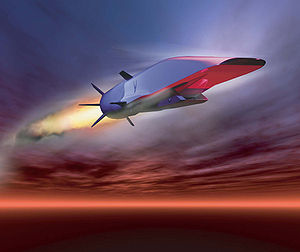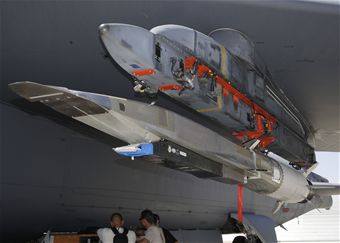
Prompt Global Strike: Strategic Considerations and Interpretations
In pursuit of U.S. aims against non-state actors at the outset of the War on Terror, in 2006 the Defense Department identified the ability to strike anywhere on Earth in under a hour’s notice as a necessary military capability and called the concept Prompt Global Strike (PGS). However, recent advances in hypersonic technology pose real questions about how PGS could affect our strategic planning and the strategic planning of other nations.
Initially, it was suggested that PGS capability could be accomplished by converting pre-existing ICBMs to carry conventional warheads, though this runs the risk of being misinterpreted as a nuclear launch that could cause a nuclear exchange. By some reports in Wired and Breaking Defense this route of weapons development has already occurred.
As an alternative to ICBM based PGS capability, different branches of the U.S. military have begun developing hypersonic technologies that could be adapted to achieve the same PGS capacity while being clearly distinguishable from an ICBM.
Testing of the U.S. Air Force’s X-51A Waverider recently came to a successful conclusion, with the program completing its last trial this past May, when the Waverider reached hypersonic velocity of Mach 5.1. The Waverider is not meant to be deployed as a weapon; it is a prototype system that has allowed the Air Force to test new technologies necessary for powered hypersonic flight.
Recognizing the Waverider as a military program, many in the West have lauded it as a scientific and engineering achievement that may usher in a new age of flight and aerospace.
Some observers in Asia though have interpreted the completion of the Waverider testing and the rise of hypersonic PGS capability as potentially destabilizing technology in terms of nuclear deterrence. They argue that PGS can potentially be used as a conventional first strike weapon to cripple an enemy’s first and second strike nuclear capacity without rising to the level of a nuclear attack.
For some nuclear armed states this is more of a potential problem than for others. The issue is that in developing a capability meant for combating an asymmetric actor in a post 9/11 environment the U.S. military has created a capability that has possible strategic implications in the eyes of other states.
As the U.S. military continues to pursue hypersonic technologies that can be applied to Prompt Global Strike it must be made clear that PGS capability is not being developed to create nuclear strategic instability, but is part of American efforts to secure itself from possible future terrorist attacks on the homeland by reaching asymmetric actors where they may believe they are safe and unreachable.
Christopher Smith is a PhD student at the University of Arizona’s Department of Chemistry and Biochemistry with a focus on Analytical Chemistry.







[…] of nuclear weapons means unfortunately that they, along with other strategic technologies like prompt global strike and cyber warfare, will remain part of modern statecraft for the foreseeable future. Still, […]